2020 will forever mark a significant milestone in remote work practices. To comply with COVID-19 safety protocols many companies have closed or limited office capacity and enabled their workforce to work remotely. There is a significant change in everyday work practices, but even more significant change in large industry events from trade shows, networking events, and conferences. While industry events as we know them are not yet possible, business must go on. Luckily, digital-based agencies such as Bluetext, have been hard at work to innovate solutions that can replicate the in-person experience as much as possible with virtual events.
Virtual events will become a universal industry standard in the future, regardless of when large gatherings become safely possible again. Hosting a virtual event eliminates the time and cost associated with work travel and allows flexibility to attend event sessions while keeping up with the normal day to day operations. Virtual events allow employees or colleagues from anywhere in the world to easily join from the comfort of their own home or office and can choose to be present at only event sessions relevant to them and their interests. Rather than having your whole team out for three days, there is the flexibility to attend select sessions for a couple of hours at a time.
If your company is considering hosting a virtual event, there’s a couple of things to consider first. After the success of Citrix Bootcamp and SonicWall Boundless 2020, Bluetext has rounded up their top tips for the first step of any virtual event: registration.
Ace the Virtual Event Invite
One of the first things to consider with any event is: Who is the audience? Is this a trade show for a number of different companies? An employee only training? Select clientele? A virtual event marketing agency will assist with the outreach to attendees, whether that strategy is based on a specific email list or advertised publicly. From email nurture campaigns to targeted paid advertising, the options are endless for inviting attendees. Based on who the target audience is, a digital marketing agency can prescribe the right strategy for your company and design promotional assets to get people interested in the virtual event.
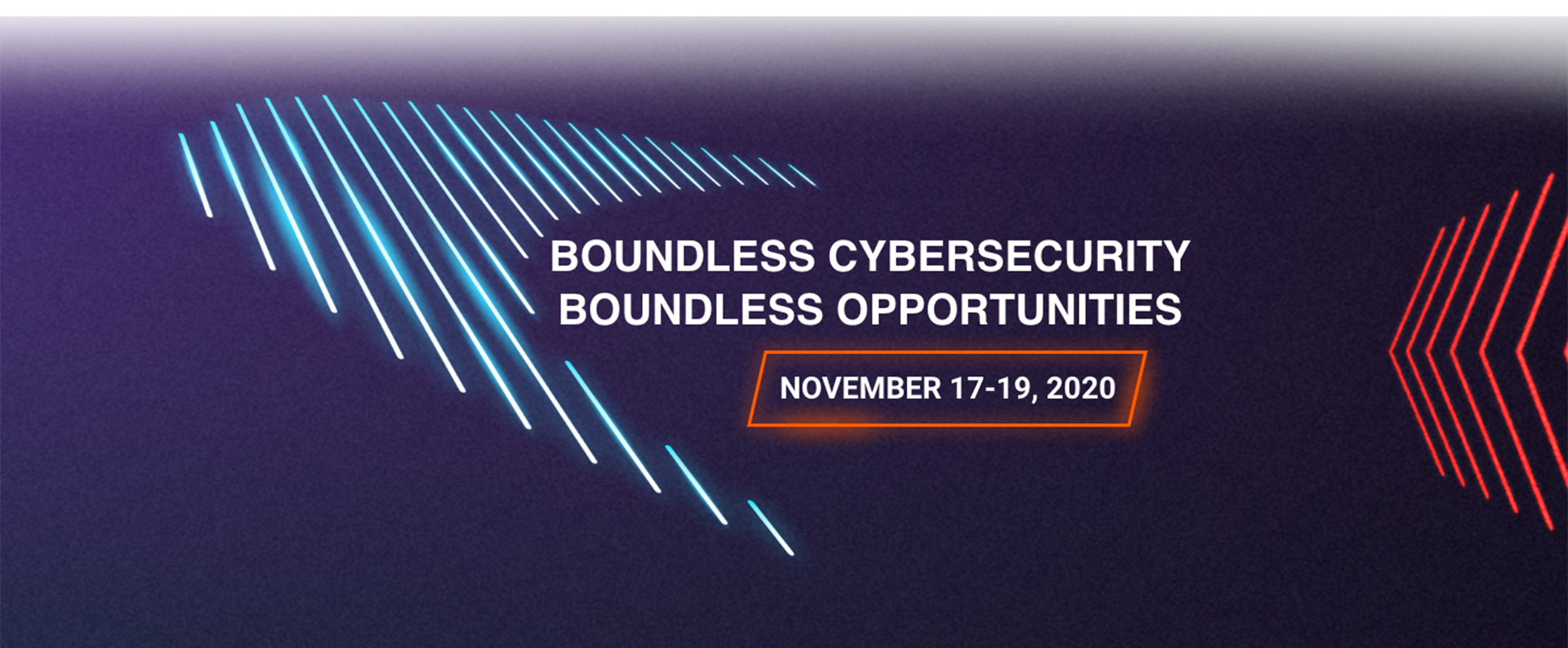
Load Up the Landing Page
Once you’ve sent out invites or promotional messages, attendees will need a place to RSVP. Just like a traditional in-person event, a headcount of attendees is needed to properly plan and test for specific traffic levels. Registration numbers are also a great KPI to measure event success. To fully close the conversion, the landing page for the virtual event must be clear, concise and enticing. There’s no formula for the perfect virtual event registration page, but at Bluetext we recommend the following components:
- A concise listing of event details (date, time, time zone, etc.)
- Spotlight of the top event sessions to get users interested
- A sizzle reel to showcase the event highlights in a minute
- A clear and easy to find the registration form
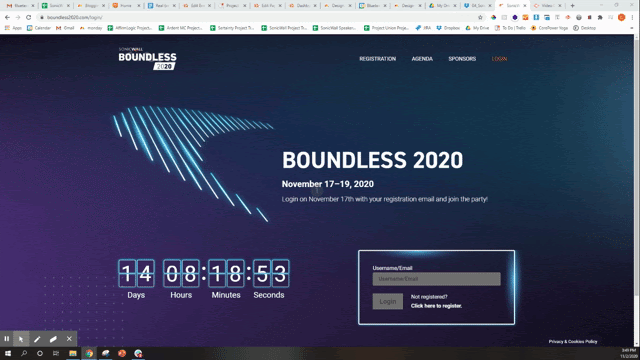
Who’s On the List?
A key component to consider with virtual event registration is registration security. Will there be proprietary information discussed at the event? Will sessions be targeted at only your employees to introduce not in market products or strategies? If so, you may want to consider white-listing your company’s email domain. If the event is centered around internal strategies and training, you may want to also black-list the email domains of your top competitors. Depending on the size and subject matter of the event, it may also be important to reinforce security by black-listing personal email addresses and ensuring all attendees are relevant business partners and colleagues.
Always Say Thank You!
Once a user has found your enticing landing page and successfully registered for your virtual event, don’t let the excitement end there. Be sure to send them an equally interesting thank you page. In our virtual event marketing experience at Bluetext, we have found that dynamic countdown clocks are a great way to get users excited about the event. A great thank you page may also want to link out to event FAQs, or highlight a special session to look forward to.
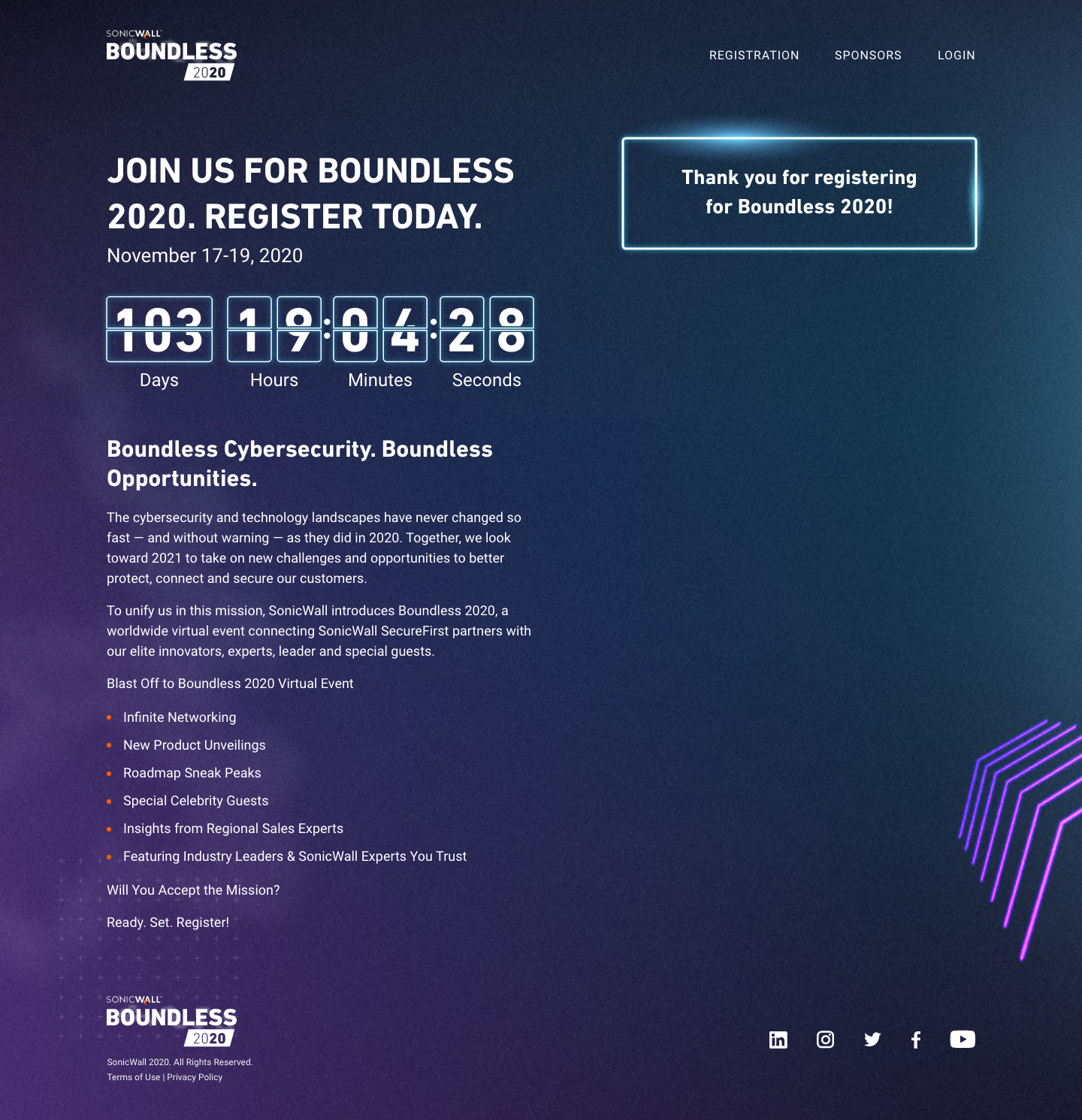
Reminder Emails They’ll Want to Read
Once a user is registered don’t let your virtual event fall off the radar. Use the registration email list to trigger a nurture email campaign that can send additional event details, reminders, and more! A full event agenda can be overwhelming to a user two months out but would be useful when they’re blocking off their calendar a week or so in advance. It’s always a best practice to remind users a week, a day, and an hour in advance of the date. Check out the recent SonicWall Boundless 2020 virtual email for some inspiration on event teasers and reminders.

With polaroids and vinyl making a comeback and tiny sunglasses making their appearance on the fashion scene once again, the trends re-emerging over the past few years have solidified the value and power of nostalgia marketing. Regardless of if you are a millennial looking to relive 90’s fashion, or a parent reminiscing about the good old days, nostalgia has something special to offer all customer groups – and that’s why it is such a powerful marketing tactic.
A Jump Back in Time
Nostalgia marketing has been leveraged by brands from all industries. By tapping into positive cultural memories from previous decades, companies can drive energy into their modern campaigns and build trust for new ideas and brands. These campaigns allow companies of any age and background to link their brand purpose with old ideas to evoke feelings of security, comfort, and engagement in their audience.

But why does nostalgia marketing work so well?
Science Daily reported that when people feel nostalgic, they tend to spend more money. When people have higher levels of social connectedness and feel that their wants and needs can be achieved through the help of others, their ability to prioritize and keep control over their money becomes less pressing. Naturally, this makes for the perfect sales and marketing tactic.
Let’s take a look at four companies that have leveraged nostalgia as a marketing strategy to boost sales and brand awareness over the past decade.
General Mills
In 2011, General Mills partnered with Target to introduce retro cereal boxes in their stores. The cereal company released limited-edition box designs for some of their most iconic cereals, recreating the original packaging from the years they were released. Not surprisingly, the sales results were astounding.
The plan not only showed how deeply the brands connect consumers across all generations but also gives today’s parents the opportunity to share memories from their own childhoods with their kids. The campaign has since transformed into an annual one, where sales [doubled] over the first year.

Adobe
Regardless of if you were around in the 1980s to experience the ingenuity of Bob Ross, you surely will recognize him after he surged to popularity again in 2016. Adobe rode the wave of the Bob Ross meme and leveraged the iconic artist’s resurgence, creating a series of tutorial videos to promote their “Adobe Photoshop Sketch” application for the iPad Pro.
Not only did this ad campaign leverage nostalgia marketing to promote Adobe’s new app, but the campaign also took advantage of the trends at the time.
Swiffer
Now, brands don’t need to only use visual branding to evoke feelings of nostalgia. Music is a very easy and straightforward way to instill the feelings of comfort and happiness in your audience.
One very memorable ad campaign that we saw in the aughts was the set of Swiffer commercials that leveraged the song “Baby Come Back” and other early 80s hits. Both humor and nostalgia were hard at work in this campaign, giving the audience a chance to reminisce about the past in a longing way, helping promote the brand in a comforting light.
Apple
When Apple was promoting the release of the iPhone 6s, they notably leveraged a more nostalgic celebrity guest‒Cookie Monster. Everyone’s favorite sweet-toothed Muppet graced our screens and showed us just how simple it is to use the Siri feature on Apple products.
Whether it is visual or auditory, nostalgia marketing can take many different forms. It frequently strikes a chord with audiences of all ages, promoting strong, positive feelings with the featured brand. Leveraging nostalgia marketing in your campaigns is often a smart tactic to help your brand resonate with a wider audience. When you’re considering leveraging nostalgia in your next marketing campaign, be sure to keep in mind whether this strategy is best for your brand. Reach out to the top marketing and branding agencies, like Bluetext, to consult if this marketing strategy is best for your business.
A fantastical idea, a powerful pitch, and energetic enthusiasm from all sides of SonicWall stakeholders. Only one task remaining: execution of the over the top Boundless Campaign.
SonicWall came to Bluetext with one main objective: bring their Boundless Cybersecurity campaign to life. As such, the SonicWall team needed creative assistance in bringing the campaign visuals up to par with their brand value. The Bluetext team was asked an age-old question of B2B companies, “How can we make this campaign memorable?”
Especially in the saturated cybersecurity market, it can be challenging to differentiate from strong competitors and help visual abstract brand promises. So the Bluetext team presented a thought-provoking approach to the campaign’s new creative and campaign taglines.
“When cyber threats are limitless, your defenses must be Boundless.” Break free with SonicWall Boundless Cybersecurity.
To communicate and contextualize this message, Bluetext presented a creative direction that would showcase the end-user in a gravity-free surrealist state, which literally breaks free of the constraint of cyber threat. The creative would be scaled across main industry verticals in order to personalize and target advertisements. The idea was over the top, innovative, and ambitious but well-received with client buy-in. Next came the challenge of execution, which was overcome using a custom photoshoot complete with realistic costumes, props, and even a trampoline. In order to achieve the effect of floating in an anti-gravity state, professional ballet dancers were hired to jump on the trampolines. Photographers captured the dancers posing mid-air, then flipped the photo 180°.




Once the in action shots were captured, the images were edited to remove the backgrounds and impose on industry-specific scenes. Related props were also imposed onto background images to make the scene appear as if person and objects had been magically released from the pull of gravity while the world remains grounded around them.

 At the time of the new Homepage and campaign landing page launch, these static images truly came to life with a subtle parallaxing effect.
At the time of the new Homepage and campaign landing page launch, these static images truly came to life with a subtle parallaxing effect.
To drive users to these newly premiered pages, SonicWall needed eye-catching advertisements that viewers would — no pun intended — gravitate to. Bluetext designed a variety of verticalized static banner ads and further animations to drive page traffic.
As the world has changed in the blink of an eye, so has the way we market to consumers. Now, more than ever, your website exists as BY FAR THE MOST IMPORTANT doorway to your brand and your brand experience. While stores stay shut, and face-to-face interaction is vastly limited, brands will rely on reaching their target audiences via their websites. Therefore, your website is mission-critical to your success.
Bluetext has published a 5 part blog series to help you think about and pressure test if your website is the best it can be.
Virtual Executive Briefing Centers are a valuable resource for companies wishing to show customers and prospects their full range of solutions in action, especially new solutions that the partner may not have implemented yet in its own organization. Customized presentations, live demos and in-depth discussions can be arranged. VEBCs offer a lot of great benefits for organizations including:
- Present your brand in a very innovative way with the latest HTML5 and video technologies
- Reach a wider audience, save money and drive efficiencies by reducing travel costs to visit a physical center
- Get your thought leaders delivering their message to a wider audience than their physical weekly calendar allows
- Deliver vertical specific messaging and solutions in a customized fashion
- Personalize the experience based on the understanding of the audiences job title, history with the enterprise, and other components the digital environment can capture and feed into the site
- Juice up your SEO with a smart build and customer journey that enhances your SEO footprint
Bluetext has had a lot of experience designing and developing Virtual Briefing Centers. Here are just a few examples of the innovation we have helped drive for our clients:
McAfee and Intel Security’s Future Agency
McAfee and Intel turned to Bluetext to design a campaign to demonstrate the advancements in cyber security that the companies are driving across the Federal Government. Named The Agency of the Future and found on the web at futureagency.com, the solution integrates an interactive, 3D experience and a series of videos with lead generation integrated throughout. The experience was enhanced with a continuous monitoring webcast that targeted federal IT security experts and drew more than 3000 leads. The campaign won major kudos at McAfee corporate.
CSC’s Digital Briefing Center
CSC’s Digital Briefing Center is where customers, partners and prospects from across the globe can come to learn more about the key technology conversations and market shifts CSC is driving into the market.
The center is driven with immersive 3D video technology that is completely interactive through Html 5 overlays throughout the user journey.
Following launch, Bluetext’s collaborative creation with CSC’s Digital Marketing team became the top performing component of the csc.com global web presence, a huge feat for a Fortune 500 corporation.
Version 2.0 features new capabilities spanning:
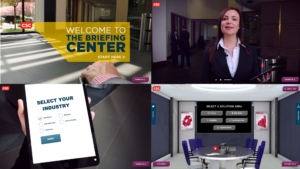
-
Multi-floor scalability
-
Triple screen experience
-
Dynamic social media integration
-
Triggered infographic visualizations synched with briefing videos
-
Chaptered video interactivity
The following video of CSC’s head of global brand and digital marketing talks about this project:
TalkShop by Cooper Thomas
From corporate meetings to conferences and workshops, connecting with your workforce and customers is an essential element of business. Bluetext was hired by Cooper Thomas to help enhance their virtual training and meeting services and next-generation virtual platform that can help their customers get the most out of their customers’ virtual events.
With their virtual event platform, you can now connect with employees, customers, and clients conveniently and cost-effectively. The unique speaker-training program guides your presenters to deliver more effective and engaging virtual presentations. The speaker coaches provide focused support to help busy subject matter experts become polished presenters. They also provide project management and program support for events ranging from single training sessions to multi-day conferences, as well as on-site support for virtual and face-to-face events.
Interactive content is here to stay. Just take a look at the 96% completion rate on BuzzFeed quizzes. Even more, a 2016 Content Marketing Institute (CMI) study found that just over 80% of marketers say that interactive content is more effective than static content when it comes to grabbing consumers’ attention.
Well, what even is interactive content, anyway? Interactive content is “content that requires the participants’ active engagement — more than simply reading or watching. In return for that engagement, participants receive real-time, hyper-relevant results they care about.”
Digital branding agencies, such as Bluetext, will ensure you are leveraging all that interactive content has to offer. Here are the top 3 types of interactive content to look out for in 2020.
Quizzes and Assessments
Quizzes and assessments are pieces of interactive content in which the user provides answers to a few questions in order to receive insights based on them. They are fun for the user to complete, and if the results are what they were looking for, they will help you build trust with your audience.
This type of interactive content doesn’t only boost engagement — they also help you get to know your audience. So when you plan to incorporate quizzes or assessments into your content plan, seek out a brand strategy agency to help you develop your content and ask yourself: What do I want to know about my audience? You may discover something new and gain some essential insights that can help you tailor your marketing efforts to be more effective.
Bluetext, a leading branding company, worked with the Graduate Management Admissions Council (GMAC) to develop a microsite to invite top-of-funnel business school candidates to learn about what is available to them in the world of graduate business schools. The introduction page on the website is an interactive quiz that helps direct users to content specifically geared toward them based on where they fall in the business school process.
Polls
Polls are the easiest and simplest way to introduce interactive content to your marketing plan. They provide a quick way to get in touch with your audience and allow you to build a genuine connection with your followers.
The most straightforward way to use polls is to ask your audience for opinions on your content, service, or product. This not only helps you drive engagement online but gives you great insight into how your audience is feeling about your brand.
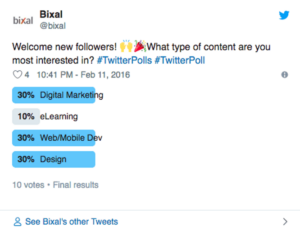
You can also invite your audience to interact with your profile by asking fun, light-hearted questions that invite them into learning more about what your company has to offer.

Contests
According to the CMI report, marketers believe that contests are the most effective type of interactive content you can use, especially in the early stage of the buyer’s journey.
Contests can include traditional raffles or giveaways. They can offer the chance to win a prize if they refer a friend to your company’s offerings. You can even introduce photos or hashtag contests where you invite your audience to submit their own user-generated content.
We have seen a rise in these types of hashtag contests and challenges across all social media platforms, especially on TikTok. The platform allows companies to leverage a hashtag to promote their brand, and users are eating it up.
Guess was the first brand in the US to release a marketing campaign as an official partner with TikTok. They ensured that every time a TikTok user opened the app, they were directed to the #InMyDenim hashtag challenge. Since its launch, videos with the hashtag have garnered over 38 million views and introduced the Guess brand to young Millenials and Generation Z.

Contests are great at bringing out people’s natural curiosity and competitive spirit, so encourage them to participate by providing an engaging contest.
Interactive content that is engaging and personalized provides your audience with a new way to engage with your brand and can build trust with your audience. Learn how Bluetext can help you leverage interactive content in your content marketing plan here.
It’s no surprise that video has taken the digital ad space by storm. It’s rare that you scroll your newsfeed or surf the web without being served an ad that is relevant to your specific interests. In 2019, 87% of marketing professionals were leveraging video in their media strategies and more than 80% of video marketers saw a stronger ROI than when they ran static banner ads or paid social image ads.
So, why are video ads so popular? And why should marketers continue to invest in video advertising in 2020?
Expanded Inventory
For starters, video inventory is incredibly robust. You can reach users across a variety of different platforms and sites – from social platforms to Connected TV devices. That’s right, you can now tailor ads to reach users while they’re streaming a show through their smart TVs. Marketers can also place video pre-roll ads across premium website inventory, along with video-specific platforms like YouTube, where ads play before or during video content that a user is viewing.
Video ad inventory has expanded across social platforms in the past few years as well, and the results have been significant. Platforms such as Instagram and Facebook see 49% higher interactions on video ads than with image ads. With such impressive engagement metrics, it makes sense that marketers are investing more of their media dollars into paid social video ads. In fact, paid social video ad spend accounted for 28.7% of all video ad spending in 2019 ($10.35 billion). This number is projected to grow to $12.48 billion in 2020.
Unique Ad Formats
The unique ad formats offered through video is another reason why marketers are investing more of their paid media budget into the medium. Sprout Social reports that marketers are increasing their digital video budget by 25% year-over-year due to the increase of new ad formats. For example, marketers are now leveraging Instagram stories to connect with users for :15 seconds through an immersive experience with a full-screen interactive video. In 2019, one-third of Instagram’s most-viewed stories came from businesses, and 20% of those stories drove users to directly message businesses.
Another evolving ad format that businesses are taking advantage of is YouTube’s 6-second bumper ad. YouTube bumper ads are non-skippable, and while quite short, marketers have been able to successfully story-tell through a sequence of these 6-second ads. Google Ads shares that “many large brands are using bumper ads to drive upper-funnel goals like ad recall and awareness…. [they] are a cost-effective way to reach your target audience, ensure your message is seen and heard, and keep you top of mind.”
As mentioned previously, the ability to target users through Connected TV (CTV) devices is a huge win for marketers. There is a shift happening between traditional TV and CTV; many households are ditching cable subscriptions and switching to subscriptions with streaming services such as Hulu, Amazon Prime and Apple TV to get their news and entertainment. By 2022, it’s projected that 35 million viewers will watch TV exclusively through streaming services. The result? Marketers are investing less in traditional TV commercials, and instead, putting those dollars behind non-skippable :15, :30 and :60 second CTV ads. The best part of CTV advertising is that you actually have access to ad data! With traditional TV, networks will provide projected impressions for running commercials during specific time slots; however, with CTV, you’ll know exactly how many users watched your ad, along with viewability metrics and insights into ad recall.
The Future of Video
While banner and image ads have seemingly run their respective courses, the future of video advertising looks promising. With new formats and campaign functions rolling out across platforms specifically for video, marketers should set aside a healthy media budget for testing new video opportunities in 2020.
One new practice that Google Ads recommends is to make your video and search ads work together. Google Ads states that marketers who run search and video together will experience a 45% higher lift in ad recall, and a 180% higher message retention. One brand, in particular, found that running video alongside paid search led to a 4x increase in branded search, and dropped their CPA by 70%.
Another new trend popping up across paid social is the use of live video. Marketers are investing in live video as a means of building trust and transparency with consumers. We’re used to seeing this trend across Instagram and Facebook Stories, and video-first platforms like Snapchat. However, some businesses are migrating live video to LinkedIn to help tell brand stories and to show followers the real people behind the company name. Live video is helping to break down walls and let users connect with businesses in a personal way.
Other new video opportunities coming our way are: shoppable video ads, augmented reality campaigns, new possibilities on IGTV and Facebook Watch, and so much more.
Bottom line: Invest in video advertising in 2020. You’ll be glad you did. Find out how Bluetext has leveraged video ads in successful go-to-market campaigns.
In a world where we are flooded with advertisements and sponsored content every moment of every day, how can you make your ad stand out from the rest? What is going to make a consumer buy your product vs. your competitor’s product if they have the same features and are selling for the same price? Sure, vibrant colors, strong call-to-actions and unique imagery can help, but in order to get the right users to engage with your content and actually convert, you have to go a step – or a few steps – further. The key to marketing success in 2020 is personalization.
In many ways, marketers already know the benefits of personalized ads. For example, we know that digital retargeting ads drive more conversions and have a stronger conversion rate than prospecting ads, merely because retargeting ads are tailored to reach users who have already visited your site. Retargeting ads are more personalized than prospecting ads in nature – we know someone visited the site and expressed interest but didn’t convert, so we use that information to create a new ad with different messaging and a stronger CTA to entice that user to convert. That’s personalized marketing, in its simplest form.
In 2020, personalization is not only growing, but if you don’t take advantage of personalized marketing, your digital ad campaign might fail. Studies show that people are 80 percent more likely to buy something when a brand makes the experience personal. With access to sophisticated technologies such as AI machine learning at our fingertips, marketers are equipped with the tools necessary to tailor ads to personal attributes and behaviors, at scale.
As Martech Advisor states, “AI personalization refers to the categorization of different customer data sets and extracting valuable insights from them. These insights are fed into an automation engine that can take action without human intervention.” In other words, AI machine learning scans a user’s online behavior to understand what type of messaging would resonate best with that end-user. Have you ever visited your Amazon Prime home page to discover several new products that Amazon is recommending for you, that you’ve never seen before? This is AI-based personalization. Amazon’s AI scanned your past user and purchase behavior and introduced you to new products, customizing your home page to match your personal attributes. You’ve likely experienced something similar on music streaming apps – Spotify recommends a playlist for you based on the songs you’re listening to at that point in time.
So – how can you take advantage of personalized marketing? Here are 3 ways you can start to leverage consumer data to customize (& personalize!) your advertising:
- Dynamic Ads – Perhaps the most daunting reason why marketers don’t take advantage of personalized advertising is the assumption that ad creative and targeting processes are manual; however, AI has completely changed the game. Through AI, digital ads can now be dynamically created based on user behavior. We touched on retargeting earlier, but with AI learnings, retargeting efforts have become far more sophisticated. If a user visits a specific white paper or product on your site but does not download or buy, AI can generate an ad for that specific white paper or product and place it in front of that user with tailored messaging. Best of all? This entire process is automated. Gone are the days where your creative team is buried in producing 50 ads in 7 different ad sizes.
- Invest in AI tools for your website – Tools such as AI-powered chatbots or AI engines can shed light on how you can personalize ad campaigns. Chatbots allow users to share data that might not be readily available through other form submissions on the site. The information users provide in a chat is then scanned through AI, producing key insights for marketers to use when forming ad campaigns. For example, if the same pain points or topics continue to surface through chatbots, you might have an idea for your next personalized go-to-market campaign.
- Tailor your campaigns based on audience segments – This sounds simple enough, but more times than not, marketers target all audiences segments under one campaign, rather than breaking up campaigns based on audience segments. For example, you want to target users who play basketball, soccer, football and tennis. You place all of these audience segments under one campaign and serve the same ad and ad copy to each user. Sure, these are similar audience segments in that they are all sports-related; however, a user who plays basketball will likely ‘look’ different than a user who plays tennis. Instead of serving the same ad and ad copy to all users, why not tailor your messaging to each specific audience segment? The more personalized you can get the ad and ad copy level, the more likely your ad will resonate with the end-user and lead to a conversion. Of course, a campaign structure like this that used to be manual has become nearly automated through DSPs and Paid Social platforms that provide ways to streamline this process, freeing up your time and eliminating human error.
In 2020, we challenge marketers to take a step back from the generic go-to-market campaigns and to get personal! How will you use AI-based personalization and machine learning to enhance your digital ad campaigns? Learn how Bluetext has used personalized marketing for our clients’ campaigns, effectively reaching the right audience with tailored, custom creative, via our website.
Programmatic Advertising – No Signs of Slowing Down in 2020
If you spend any time at all surfing the web, you have encountered some form of programmatic advertising. The video ad that plays before you stream your favorite TV show? Programmatic. The banner ad that appears alongside the cooking recipe you’re reading? Programmatic. The sponsored article content that shows up as you’re scanning your favorite news site? You guessed it – it’s programmatic.
Programmatic Advertising – What is it?
Programmatic ad buying is the use of software to purchase digital advertising in real-time, as opposed to the traditional ad buying process that involves RFPs, human negotiations, and manual insertion orders. It allows digital agencies like Bluetext to strategically select where we want to show display, video and native ads, and when.
A huge benefit of programmatic advertising is that the software grants advertisers access to the biggest data providers in the game. Not only are we choosing where and when to show ads online, but we have the capabilities to choose who actually sees our ads. Advertisers are able to hand-select from thousands of audience segments collected by these data providers and layer those segments onto programmatic campaigns.

Why Invest in Programmatic?
While targeting capabilities and ease-of-use are two major benefits of investing in programmatic advertising, there are a number of reasons why digital agencies should hop on the programmatic bandwagon in 2020.
Here are Bluetext’s top 3 reasons for investing in programmatic advertising in 2020:
1. Artificial Intelligence (AI) and Machine Learning
Programmatic advertising already makes digital ad buying easier for advertisers than it ever was before, but AI and machine learning have simplified the process even more. For years, media buyers and digital marketers relied on a manual process to review campaigns, manage budgets, make adjustments to ad creative, and more. However, AI and machine learning have become so sophisticated that the manual days of optimizing are nearly over. Once your campaign has launched, the AI will start to learn what’s working and what’s not, shifting budgets and making adjustments to enhance efficiency in real-time. Studies show that by 2035, AI will boost productivity and profitability by nearly 40%.
As a leading digital marketing agency, Bluetext has seen the benefits of AI and machine learning pay off in major ways. Not only is our digital marketing team more efficient, but the results we were able to drive for clients in 2019 far exceeded their goals. With AI and machine learning only becoming smarter, Bluetext is equipped to reach new heights with programmatic advertising in 2020.
2. Digital Out of Home (DOOH) Opportunities
Digital Out of Home (DOOH) advertising is a unique marketing channel that allows advertisers to reach users outside of their homes in digitally-displayed spaces. Though DOOH media isn’t new, it’s expected to grow exponentially in the coming years. Reports show that between 2016 and 2023, the DOOH media channel will grow from $3.6 Billion to $8.4 Billion.
With the average person spending 70% of their time outside of their home, investing in DOOH in 2020 is a no-brainer. From mobile geofencing to digital billboards, the opportunities to reach people on-the-go are vast. Most importantly, because DOOH is now offered through programmatic platforms, advertisers will have access to significantly more data from DOOH advertising than ever before.
Digital marketing agencies like Bluetext now have the ability to measure results from a digital billboard ad or an animated kiosk through the data and technology programmatic tools provide. Bluetext is looking forward to expanding DOOH capabilities in 2020 to connect the dots from in-home browsing to in-store purchasing.
3. Multi-Channel Advertising
In the past, advertising agencies had to leverage several different platforms, media vendors and direct buys to ensure they reached their audiences across all mediums. Programmatic advertising has simplified this process so that marketing agencies like Bluetext can execute all advertising efforts through one simple-to-use platform.
Programmatic solutions include paid social, display, video pre-roll, native advertising, geofencing, DOOH, connected TV and more. Digital marketing agencies like Bluetext now have the capability to run one digital campaign across all different mediums and – most importantly – track user behavior across all touchpoints. With AI and machine learning, programmatic campaigns will optimize to reach users at the right time on the right medium, whether that’s on the computer, on their smart TV, or in a store on their mobile device. In 2020, it’s expected that even more multi-channel solutions will be announced, such as voice-activated ads powered through devices like Alexa and Siri.

Programmatic advertising has opened the door for digital marketing agencies like Bluetext to effectively run and execute campaigns across a number of channels and mediums, making media dollars more efficient than ever before. With the expansion of programmatic solutions in 2020, there’s no limit to the number of possibilities Bluetext will be able to leverage to drive digital media success for our clients. To learn more about our work with programmatic advertising contact us.
Bluetext, a leader in association marketing, is proud to announce that it has been selected by the Plastics Industry Association (PLASTICS) as its design, marketing, and brand agency-of-record for NPE2021: The Plastics Show. NPE2021 is the industry’s largest and most influential plastics trade event and is held every three years in Orlando. Bluetext is designing the show’s logo, brand look and feel, website, and collateral, and is creating and executing the go-to-market campaigns to attract exhibitors and attendees to the event. It will also manage public and media relations as well as both organic and paid social media.
“We selected Bluetext because of its team’s strong creative and strategic vision that can help move the industry forward,” said Susan Krys, PLASTICS VP of Tradeshows and Marketing. “We’re off to a great start.”
NPE2021 will take place at the Orlando County Convention Center in Orlando, Florida May 17-21, 2021.
Learn how Bluetext can help with your association marketing, brand, and campaign needs.
As marketing professionals improve at optimizing their advertising campaigns around personalized messaging and graphics for target audiences, a “Time Machine” strategy of targeting prospects will become more prominent in 2019.
What’s a Time Machine for marketing? It’s a new approach to targeting the best prospects based on what they might have done – or attended – in the past.
Tracking behavior via AI and advanced analytics of individuals who have attended an event in the past and targeting them for digital outreach offers a new avenue of personalized digital marketing. In one recent example, Bluetext identified everyone who has gone to see a sports team over the past year, with the intent of serving up ads for with offers to buy season tickets or branded merchandise. Only recently have the data analytics and AI been available that could identify who attended a game over the past year. That’s why we call it “Time Machine” technology.
Yet, Time Machine strategies don’t stop at just attendance. Personalization also means setting up a whole system of user personas, messages for each persona, and specific creative that will appeal to them. Then, if prospect (A) performs action (B), they receive item (C); while prospect (X) performing acting (B) will result in them receiving item (Z). So while two individual prospects may have both gone to the same game, getting them to buy the tickets for next season may require different messages to push them over the finish line. Tracking behavior via artificial intelligence and targeting audiences for digital outreach is just one of the ways that a “Time Machine” strategy leverages deep data as a new avenue of personalized digital marketing.
Personalization is powerful because it solves the problem of relevance. Traditionally, ads were targeted at mass audiences, meaning that the vast majority of impressions were useless because they were not relevant to the viewer. A Time Machine strategy, paired with a robust personalization system, means that you can deliver more relevant ads and, in turn, have a better chance of converting more prospects.
At the end of the day, a Time Machine strategy is all about increasing relevance by matching an individual’s past behavior with a message and/or creative that compels them to repeat that behavior. Your brand’s value proposition, communicated in the prospect’s language, matching their expectations, and addressing their unique needs and desires, will be more meaningful with a Time Machine strategy.

